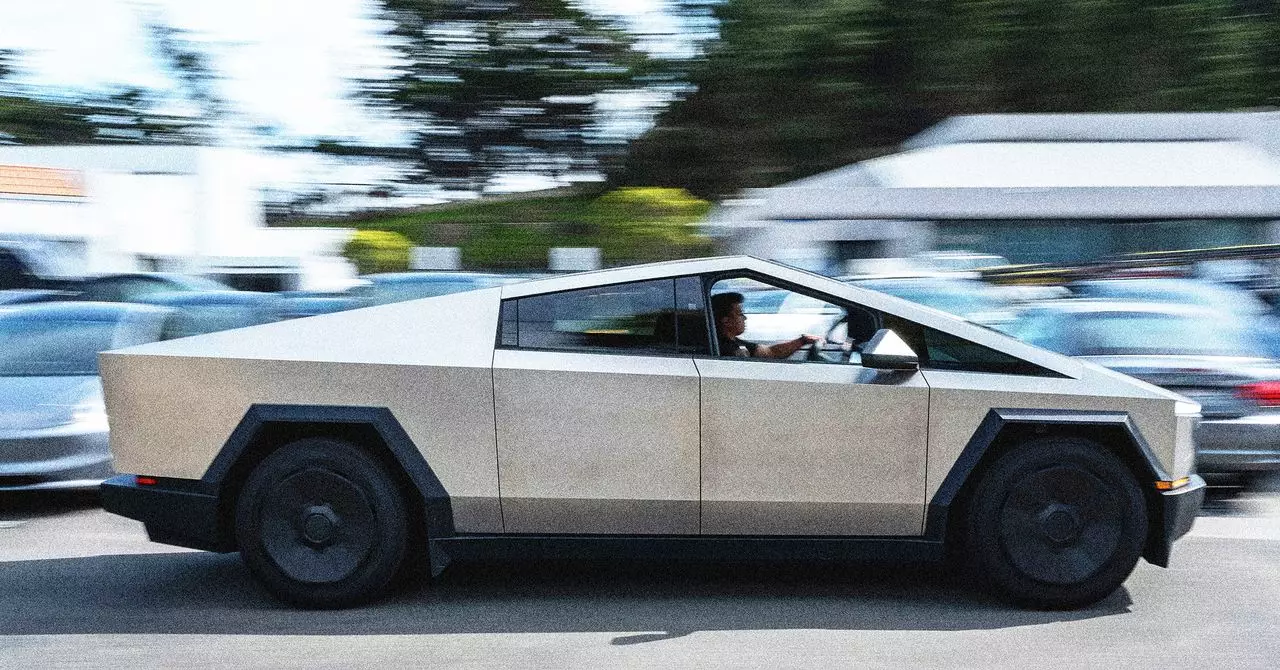The world of automotive innovation has not been without its fair share of challenges, and Tesla’s ambitious Cybertruck is no exception. Recently, the electric vehicle pioneer announced it would recall nearly all manufactured Cybertrucks due to a concerning issue related to a stainless steel trim panel that could potentially detach while driving. This move marks the eighth recall for the high-profile electric pickup since its launch onto U.S. roads a little over two years ago. Unlike many of its previous recalls that were resolvable through convenient over-the-air software updates, this dilemma necessitates physical inspections and repairs at Tesla service centers.
A Closer Look at the Recall Details
The recall, impacting over 46,000 Cybertrucks produced from November 2023 through February 2025, is specifically linked to a cosmetic panel. According to the National Highway Traffic Safety Administration (NHTSA), this panel is affixed to the vehicle’s body using a type of adhesive. Concerns arose when reports indicated that the adhesive could fail, leading to a potential “road hazard” for drivers and other vehicles. While the separation of a trim panel might seem trivial at first glance, it could considerably escalate the risk of traffic accidents.
The catalyst for this recall was a series of complaints surfacing on social media platforms, which prompted Tesla to investigate the adhesive integrity and overall safety of the vehicle. Industry experts have pointed to the unusual characteristics of stainless steel, which distinguishes the Cybertruck from other vehicles that typically rely on standard metal for body construction. Dale Harrow, chair of the Intelligent Mobility Design Center at the Royal College of Art in London, expressed surprise regarding the adhesive issues, hinting that the use of glue in car manufacturing is more common than most people realize. His insight reveals a deeper context: the contemporary automotive landscape often demands lighter and more efficient designs, leading manufacturers toward innovative bonding methods.
The Science Behind Adhesive Bonding
In this scenario, the use of adhesives looks to improve efficiency and reduce weight, creating a vehicle that stands out not only for its futuristic aesthetic but also its engineering. However, the unique properties of stainless steel—known for its durability but also for its heat and cold conduction—might be contributing to the adhesive failures when exposed to extreme weather conditions. Harrow suggests that the curing process of adhesives used in conjunction with stainless steel could be undermined, perhaps due to improper bonding temperatures or insufficient ultraviolet (UV) exposure during the curing phase.
What is alarming is the implication that a company of Tesla’s stature either became susceptible to such an oversight or failed to foresee the environmental challenges posed by this innovative material choice. Could it be that the combination of untested materials and production processes is putting safety at risk?
Broader Implications for Tesla and the Automotive Industry
For Tesla, this incident raises significant questions about quality control processes and the engineering decisions that underpin its vehicles. While the company has earned a reputation for pushing boundaries, this recall exemplifies the necessary balance between innovation and safety. It also evokes scrutiny from both consumers and regulatory bodies: how will Tesla respond not only to this specific issue but also to the broader implications for the future of electric vehicle safety?
As the industry progresses, the use of alternative materials like carbon fiber and stainless steel will likely continue to attract attention for their potential benefits, but this incident might serve as a cautionary tale. The automotive world has seen companies thrive based on their ambition to adopt new technologies, yet those same pursuits can lead to unforeseen complications.
While Tesla’s Cybertruck sets an ambitious precedent for the automotive industry, the adhesive issue highlights a crucial turning point in quality assurance and safety standards. In an era where innovation is celebrated, the integrity of those innovations must not be compromised. As Tesla navigates this latest challenge, the broader automotive sector remains on alert, recognizing that the road to advancement is often marked by unexpected potholes.

